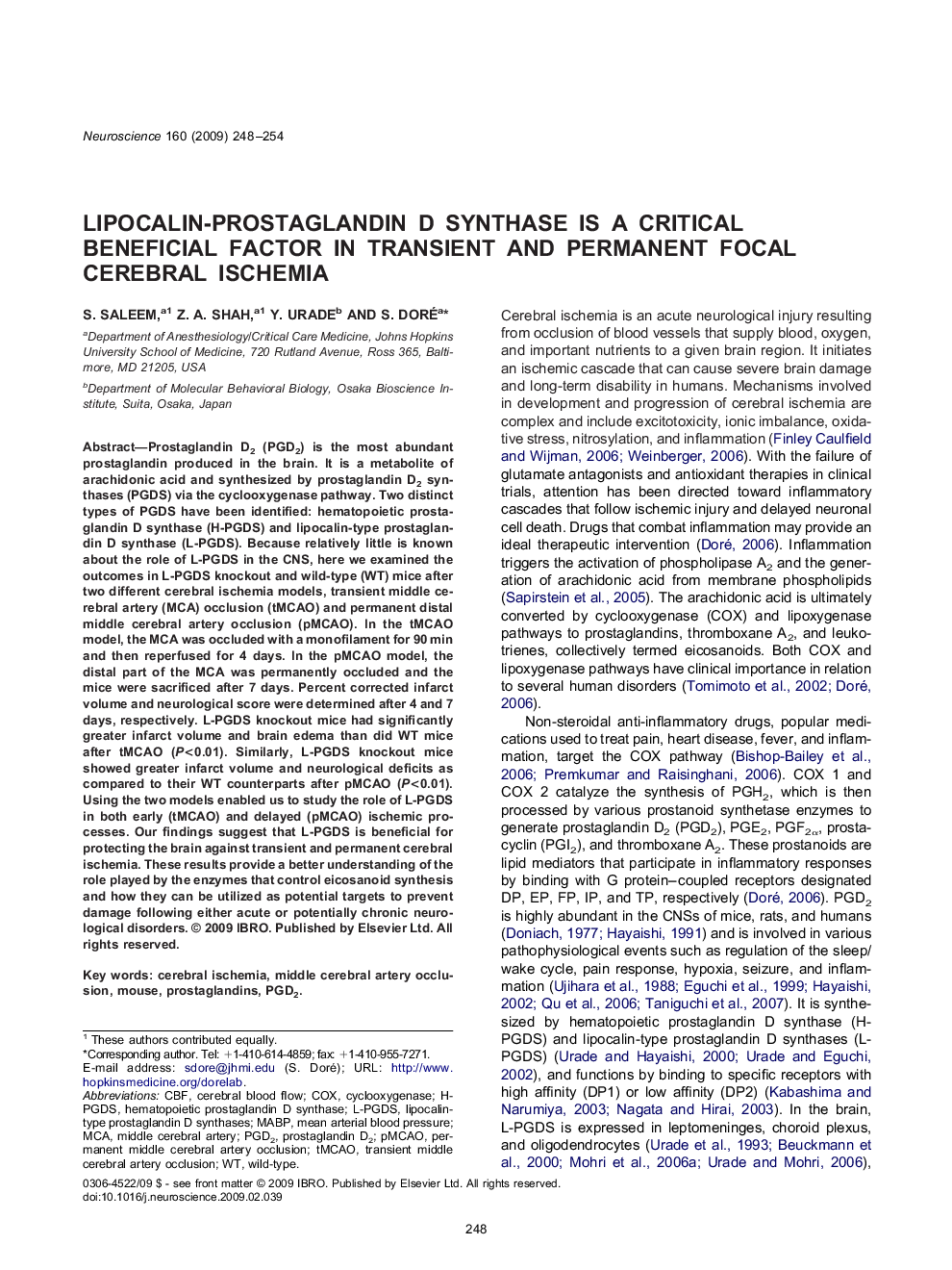| کد مقاله | کد نشریه | سال انتشار | مقاله انگلیسی | نسخه تمام متن |
|---|---|---|---|---|
| 4340096 | 1295782 | 2009 | 7 صفحه PDF | دانلود رایگان |
عنوان انگلیسی مقاله ISI
Lipocalin-prostaglandin D synthase is a critical beneficial factor in transient and permanent focal cerebral ischemia
دانلود مقاله + سفارش ترجمه
دانلود مقاله ISI انگلیسی
رایگان برای ایرانیان
کلمات کلیدی
COXH-PGDSTMCAOpMCAOMABPCBFPGD2MCAL-PGDS - PGDScyclooxygenase - آنزیم سیکلواکسیژنازmiddle cerebral artery occlusion - انسداد شریان (سرخرگ) مغزی میانیPermanent middle cerebral artery occlusion - انسداد شریان مغزی میانی دائمیtransient middle cerebral artery occlusion - انسداد شریان مغزی میانی متناوبCerebral ischemia - ایسکمی مغزیcerebral blood flow - جریان خون مغزیmiddle cerebral artery - شریان مغزی میانیmean arterial blood pressure - فشار خون شریانیMouse - موشwild-type - نوع وحشیhematopoietic prostaglandin D synthase - هموگلوبین پروستاگلاندین D سنتازProstaglandin D2 - پروستاگلاندین D2Prostaglandins - پروستاگلاندین ها
موضوعات مرتبط
علوم زیستی و بیوفناوری
علم عصب شناسی
علوم اعصاب (عمومی)
پیش نمایش صفحه اول مقاله

چکیده انگلیسی
Prostaglandin D2 (PGD2) is the most abundant prostaglandin produced in the brain. It is a metabolite of arachidonic acid and synthesized by prostaglandin D2 synthases (PGDS) via the cyclooxygenase pathway. Two distinct types of PGDS have been identified: hematopoietic prostaglandin D synthase (H-PGDS) and lipocalin-type prostaglandin D synthase (L-PGDS). Because relatively little is known about the role of L-PGDS in the CNS, here we examined the outcomes in L-PGDS knockout and wild-type (WT) mice after two different cerebral ischemia models, transient middle cerebral artery (MCA) occlusion (tMCAO) and permanent distal middle cerebral artery occlusion (pMCAO). In the tMCAO model, the MCA was occluded with a monofilament for 90 min and then reperfused for 4 days. In the pMCAO model, the distal part of the MCA was permanently occluded and the mice were sacrificed after 7 days. Percent corrected infarct volume and neurological score were determined after 4 and 7 days, respectively. L-PGDS knockout mice had significantly greater infarct volume and brain edema than did WT mice after tMCAO (P<0.01). Similarly, L-PGDS knockout mice showed greater infarct volume and neurological deficits as compared to their WT counterparts after pMCAO (P<0.01). Using the two models enabled us to study the role of L-PGDS in both early (tMCAO) and delayed (pMCAO) ischemic processes. Our findings suggest that L-PGDS is beneficial for protecting the brain against transient and permanent cerebral ischemia. These results provide a better understanding of the role played by the enzymes that control eicosanoid synthesis and how they can be utilized as potential targets to prevent damage following either acute or potentially chronic neurological disorders.
ناشر
Database: Elsevier - ScienceDirect (ساینس دایرکت)
Journal: Neuroscience - Volume 160, Issue 1, 21 April 2009, Pages 248-254
Journal: Neuroscience - Volume 160, Issue 1, 21 April 2009, Pages 248-254
نویسندگان
S. Saleem, Z.A. Shah, Y. Urade, S. Doré,